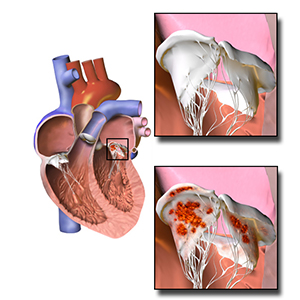 Smart Citations
Smart CitationsSee how this article has been cited at scite.ai
scite shows how a scientific paper has been cited by providing the context of the citation, a classification describing whether it supports, mentions, or contrasts the cited claim, and a label indicating in which section the citation was made.
Etiology, clinical characteristics, and outcome of infective endocarditis: 10-year experience from a tertiary care center in Pakistan
This study was conducted to assess the clinical characteristics, causative agents, complications, and outcomes of infective endocarditis (IE) among patients presenting to our tertiary care center over the last decade. This retrospective cohort study included all adult patients admitted to the Aga Khan University Hospital with the diagnosis of IE over a ten-year period from 2010 to 2020. Outcomes variables included complications during hospitalization, surgical intervention, mortality, and length of stay. We identified a total of 305 cases out of which 176 (58%) were males and 129 (42%) were females. The mean age of the patients was 46.9±18.8 years. 95 (31%) had prosthetic valves in place. Staphylococcus aureus was isolated in 54 (39%) patients followed by coagulase-negative Staphylococcus in 23 (17%). Echocardiography revealed vegetations and abscesses in 236 (77%) and 4 (1%) patients, respectively. The most common valvular complication was mitral valve regurgitation found in 26 (9%) patients, followed by tricuspid valve regurgitation in 13 (4%) patients and aortic valve regurgitation in 11 (3%) patients. Furthermore, 81 (27%) patients suffered from heart failure and 66 (22%) from a stroke during hospitalization. The mean hospital length of stay was 10.4 ± 10.6 days. 64 (21%) patients required surgical repair and the overall mortality rate was 25%. Prosthetic valve endocarditis (OR = 3.74, 95% CI = 2.15-6.50, p<0.001), chronic kidney disease (OR = 2.51, 95% CI = 1.15-5.47, p=0.036), previous stroke (OR = 2.42, 95% CI = 1.18-4.96, p=0.026), and ischemic heart disease (OR = 3.04, 95% CI = 1.50-6.16, p=0.003) were significantly associated with an increased risk of mortality. In conclusion, our study provided valuable data on the clinical characteristics and outcomes of patients with IE in a developing country. S. aureus was the most common causative agent. Heart failure and stroke were the most common complications. The presence of prosthetic valves, history of chronic kidney disease, ischemic heart disease and previous stroke were associated with a significantly increased risk of mortality. Surgical management was not associated with improved outcomes.
Downloads
How to Cite

This work is licensed under a Creative Commons Attribution-NonCommercial 4.0 International License.
PAGEPress has chosen to apply the Creative Commons Attribution NonCommercial 4.0 International License (CC BY-NC 4.0) to all manuscripts to be published.

 https://doi.org/10.4081/monaldi.2022.2212
https://doi.org/10.4081/monaldi.2022.2212





